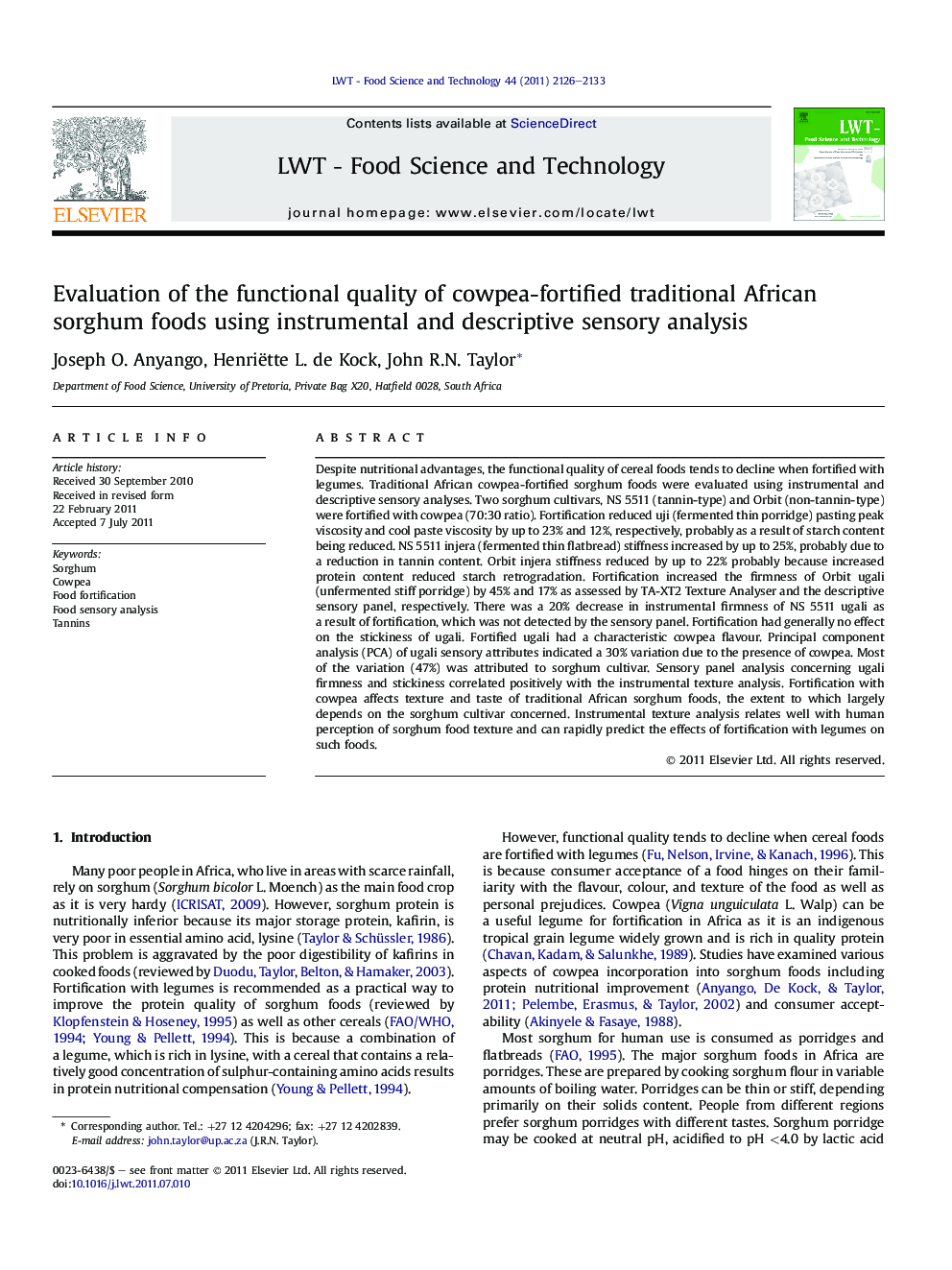| کد مقاله | کد نشریه | سال انتشار | مقاله انگلیسی | نسخه تمام متن |
|---|---|---|---|---|
| 6405846 | 1330926 | 2011 | 8 صفحه PDF | دانلود رایگان |

Despite nutritional advantages, the functional quality of cereal foods tends to decline when fortified with legumes. Traditional African cowpea-fortified sorghum foods were evaluated using instrumental and descriptive sensory analyses. Two sorghum cultivars, NS 5511 (tannin-type) and Orbit (non-tannin-type) were fortified with cowpea (70:30 ratio). Fortification reduced uji (fermented thin porridge) pasting peak viscosity and cool paste viscosity by up to 23% and 12%, respectively, probably as a result of starch content being reduced. NS 5511 injera (fermented thin flatbread) stiffness increased by up to 25%, probably due to a reduction in tannin content. Orbit injera stiffness reduced by up to 22% probably because increased protein content reduced starch retrogradation. Fortification increased the firmness of Orbit ugali (unfermented stiff porridge) by 45% and 17% as assessed by TA-XT2 Texture Analyser and the descriptive sensory panel, respectively. There was a 20% decrease in instrumental firmness of NS 5511 ugali as a result of fortification, which was not detected by the sensory panel. Fortification had generally no effect on the stickiness of ugali. Fortified ugali had a characteristic cowpea flavour. Principal component analysis (PCA) of ugali sensory attributes indicated a 30% variation due to the presence of cowpea. Most of the variation (47%) was attributed to sorghum cultivar. Sensory panel analysis concerning ugali firmness and stickiness correlated positively with the instrumental texture analysis. Fortification with cowpea affects texture and taste of traditional African sorghum foods, the extent to which largely depends on the sorghum cultivar concerned. Instrumental texture analysis relates well with human perception of sorghum food texture and can rapidly predict the effects of fortification with legumes on such foods.
⺠Functional quality of cereal foods tends to decline when fortified with legumes. ⺠Fortifying sorghum foods with cowpea affects taste but has little effect on texture. ⺠Cowpea-fortified sorghum food texture related to tannin presence in sorghum grain. ⺠Texture analysis correlates with human perception of cowpea-fortified sorghum food.
Journal: LWT - Food Science and Technology - Volume 44, Issue 10, December 2011, Pages 2126-2133